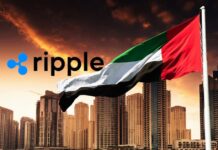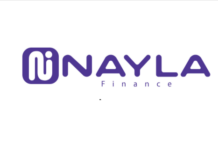As the world went into lock down a year ago, the vast majority had to look for alternative ways. And they pretty much turned to internet shopping and other web-based services. And that certainly sped things up on web-based business reception. And expanded a lot of absolute US retail deals by 75%. The raise was turned up even a year ago which is growing ever since.
Retail points including Walmart, Best Buy, and Target saw their market capitalization almost go twice as much in 2020 through huge business deals through eCommerce. Enterprises that power the web-based business, they’re getting huge profits just because of the eCommerce ecosystem they’re keeping up. Organizations like FedEx and Shopify seeing fantastic development with this amazing pattern of getting involved in the online ecosystem.
The ‘Buy Now, Pay Later’ (BNPL) was a huge success and they become famous pretty fast. The pandemic allowed the idea to go on even further and the idea got even more popular. The reason for this huge success kinda caused by the unemployment rate suddenly grew right from the start of the pandemic.
WHAT ARE BNPL SOLUTIONS?
BNPL arrangements permit clients to fan out at the expense of their purchases. Every purchase didn’t take interest per installments and it helped both the customers and sellers financially.
Clients
Instead of promptly paying $2,000 for another TV, you would now be able to pay $335 every month. The charge however becomes more than a half year at 0% interest including $0 cost, through a consistent checkout experience. It also became an adaptable installment alternative that people loved to use benefiting both the clients and merchants.
The traders also gained benefits, as they witness an improvement in change rates. And meanwhile, AOVs increased and increased sales.
As indicated by Worldpay’s 2020 Global Payments report, BNPL turned into the quickest developing internet business platform worldwide, extending this classification to represent 9% of internet business installments by 2023 in EMEA.
As financial backers recognized the arrangement’s latent capacity, BNPL suppliers had an incredible year. That includes Afterplay significantly increasing its market cap triple, and Affirm’s worth took off by 132% since it started exchanging in mid-January.
CREDIT CARD DISRUPTORS
The idea of a delayed payment certainly isn’t new and it’s been there for years. We as a whole have Mastercards, which pretty much provides us with these ‘Buy Now, Pay Later’ features. Shockingly, Visas have stayed unaltered for as far back as 30 years, even though the clients built up a repugnance for them. That follows the downfall of the economy with excessive loan fees.
Fundamentally, the ATM card suppliers have gotten apathetic and are being disrupted by BNPL players. The hypothesis behind the disruption theory follows:
Disturbance happens when more modest, more lithe players present a lower performing, less expensive item with a primarily unique plan of action. At first, focusing on a specialty set of clients which includes most low-valued customers or unserved purchasers are disregarded by officeholders, who rather center around protecting their inheritance plan of action.
As new contestants steadily improve their item, they climb the natural pecking order focusing on more alluring clients and taking a piece of the overall industry from officeholders, who unfit to upset themselves, see their plans of action become outdated, and slowly pass on.
Contrasted with normal credit cards, BNPL arrangements are surely substandard without a doubt. They must be utilized with shippers that are incorporated into their checkout page. Also, high spenders can for the most part cover their Mastercard expenses and will not be pulled into BNPL arrangements. Nonetheless, overlooking this pattern can be as destructive a slip-up as Blockbuster disregarding Netflix when the new century rolled over. The story is already over and we do know what happened in the end.
It’s still not clear whether organizations like Affirm and Klarna will surpass MasterCard and Visa one day. Given the new flood in appropriation, the full-scale tailwinds, and the developing hesitance towards Mastercards, this may happen sooner than we might suspect.
ECONOMICS OF BNPL BUSINESSES
Productivity for BNPL organizations relies upon seven fundamental measurements and looks something like this:
- Net take rate addresses the commission charged to certain traders with short installment handling transactions that the BNPL pays along.
- The amount of interest BNPL providers pay banks for liquidity corresponds to the debt cost.
- The Debt management cost rises to the credit check costs in addition to installment assortment costs with removing the collected late payment from clients.
- Only the provisions for debt impairment match the unpaid loans that equal the weighted average percentage.
The four above parts address the commitment limit and in their initial days, BNPL will generally have a negative commitment limit as financial losses brought about from debt irregularity clear out any payment that was produced. In any case, over the long run, BNPL players use the information to improve their calculations and eliminate “negative clients” from their foundation, minimizing such financial losses to ever happen.
We should take a model: Suppose your net take rate is 5% (expecting vendors pay you 6% and you pay 1% in installment handling charges). If you pay a 1% premium on your credit, and it costs you 1% to oversee shopper advances, the level of your non-performing advances can’t surpass 3%; else, you lose cash. But, this figure is for the most part higher in the early years and remains so for some time.
GMV alludes to Gross Merchandising Value, the amount of all installments led on the BNPL Platform and the points are right below.
Showcasing and deal costs are costs brought about as BNPL suppliers earn and locally available the two shippers and clients to their foundation.
General and administrative expenses include team salaries, technology, and other infrastructure costs.
Turning profits in BNPL is very tricky, and the model heavily relies on economies of scale (i.e., a high GMV) which enable companies to:
- Negotiate better terms with financial (banks) and infrastructure providers (payment systems).
- Access more data to improve their algorithms and reduce losses from debt impairment.
- Balance out the high fixed costs of the business (marketing, salaries, technology, and infrastructure).
CONSUMER-MERCHANT FLYWHEEL
Way past the usual benefits, the BNPL financial model depends on a positive criticism cycle that assists champs with continuing to win.
As more traders join a BNPL supplier, more customers have the chance to utilize the help. As these buyers see the help across different platforms, they trust it more and are more disposed to attempt it, prompting more exchanges.
More buyers lead to more exchanges and higher GMV. Accordingly, BNPL suppliers increment their productivity (economies of scale) improve their danger appraisal abilities and calculations, in this way dropping their credit misfortunes (obligation hindrance).
Improved financial matters empower BNPL organizations to offer more appealing arrangements and better administrations to vendors.
Better arrangements and administrations make the BNPL offer more appealing to merchants, expanding by and large appropriation and drawing in more traders.
BNPL IN THE MIDDLE EAST
The Middle East has seen a blast of BNPL arrangements in the previous year, with 10+ suppliers arising, a large number of whom have effectively raised critical financing to investigate the space.
Past improving transformation and deals, territorial BNPL suppliers offer a bonus: Partial alleviation from Cash-On-DeliveryCOD) issues. COD, which represented over 60% of online business deals pre-pandemic, has been a significant deterrent for online business development in the district and it’s pretty annoying for the merchants which go without saying.
BNPL arrangements permit clients to pay after the supposed delivery, subsequently part of the way pushing some of them away from COD and eliminating the assortment trouble from vendors.
Subsequently, I anticipate that this service should quickly acquire a foothold in the Middle East. Nonetheless, the business is probably going to go through some significant movements throughout the next few years as we see four key changes occurring:
1. NOT EVERYONE WILL SURVIVE.
As we’ve already stated, the financial model/flywheel impact in BNPL implies that prevailing in this business relies on your capacity to:
- Grow GMV and accomplish economies of scale.
- Raise sufficient cash to cover possible financial losses in the early long stretches of development (as you work to yield a positive commitment edge and cover your fixed expenses).
Therefore, we will see a combination on the lookout, as more modest players neglect to accomplish the necessary scale or collect sufficient cash and in this manner leave the space (or are consumed by certain shippers). Ultimately, a few autonomous players would endure and develop, each picking a particular class or geology to zero in on.
Given all players offer generally a similar center item, the delivery will be the center of attention of accomplishment in the main period of development: Whoever gets the most noteworthy number of value retailers first will assemble a benefit.
2. TAKING THE BATTLE TO THE CONSUMER
As traders begin offering more than one BNPL arrangement, suppliers will very before long look to the opposite finish of the commercial center (the purchaser) to catch the exchange.
They will divert their advertising financial plan towards contributions pointed toward keeping the buyer faithful to their foundation. Therefore, hope to see more redid items and worth added administrations for shoppers. In the long run, BNPL suppliers will transform their sites into shopping and disclosure platforms with dealer limits to draw in first-time clients. In that regard, BNPL applications/sites become a smaller than usual adaptation of The Entertainer zeroed in on extravagance/high-esteem buys.
Shahry is a pioneer here and has effectively made strides toward this path as it empowers clients to peruse different items and checkout on the Shahry application itself, giving a consistent encounter and guaranteeing you to catch the attention of the shopper before they get to the checkout page. ValU, the first in the area to offer BNPL, which is claimed by EFG Hermes, has likewise set out on a similar excursion.
And after that, like what western organizations are doing, territorial BNPL suppliers will offer virtual cards, where shoppers pre-add cash to use on their web and disconnected buys, subsequently keeping them faithful.
3. MORE REGULATORY SCRUTINY
Customer loaning is quite possibly the most directed areas in our district and as they develop, anticipate that BNPL providers should pull in a more significant level of examination. Controllers will explicitly be stressed over the antagonistic choice impact of the business:
Numerous BNPL shoppers pick the help as they can’t bear to pay for their buy completely. These customers will be at a higher danger of defaulting on their advances and getting troubled by obligation. Controllers will search for approaches to secure them and will not take a gander at BNPL suppliers utilizing strategies that boost drive buys
4. SOME RESPONSE FROM TRADITIONAL PLAYERS
Given the low boundaries to the access, there is no motivation behind why huge web-based business players can’t begin offering their BNPL upon checkout (possibly purchasing the more modest parts in the space as referenced in pattern 1 above).
Also, banks may take in some things from the interruption hypothesis and begin furnishing a Visa suite with a comparable construction. In the US, JP Morgan Chase has as of late entered the BNPL space, offering shoppers the choice to pay for buys more than several months at 0% premium and a little month-to-month charge.
Despite how things work out, the future searches brilliantly for Fintech major parts in the district and explicitly BNPL suppliers.

























